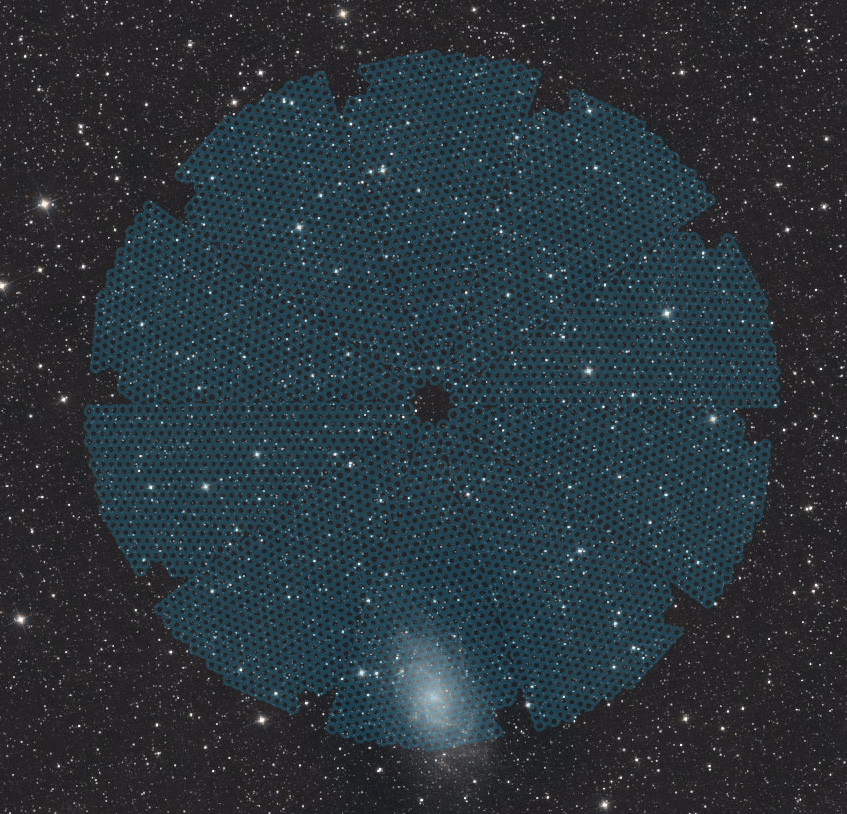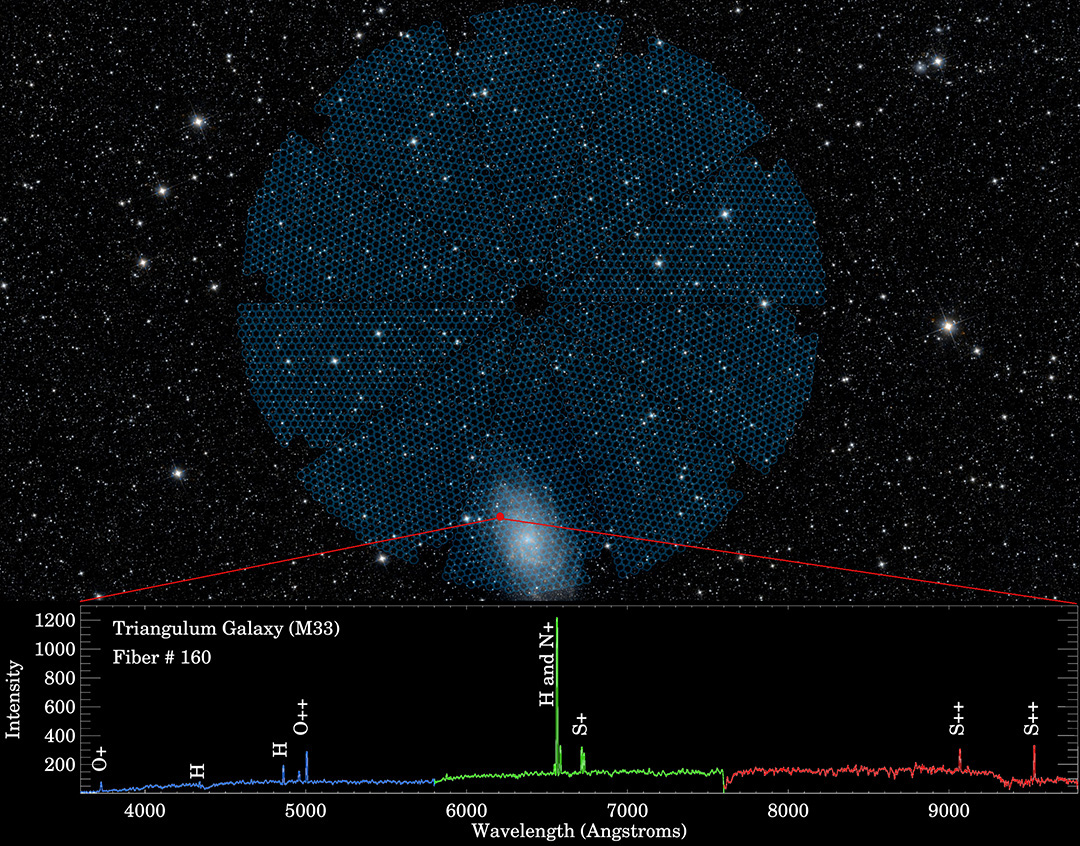Image List
-

DESI's 5000 spectroscopic "eyes" can cover an area of sky about 38 times larger than that of the full moon, as seen in this overlay of DESI's focal plane on the night sky (top). Each one of these robotically controlled eyes can fix a fiber-optic cable on a single object to gather its light.
DESI Collaboration -

DESI's 5000 spectroscopic "eyes" can cover an area of sky about 38 times larger than that of the full moon, as seen in this overlay of DESI's focal plane on the night sky (top). Each one of these robotically controlled eyes can fix a fiber-optic cable on a single object to gather its light (the red circle marks the location of a single positioner). The gathered light collected from a small region in the Triangulum galaxy (bottom) by a single fiber-optic cable is split into a spectrum (bottom) that reveals the fingerprints of the elements present in the galaxy and aid in gauging the distance to the galaxy. The test spectrum shown here was collected by DESI on Oct. 22.
Dustin Lang, Aaron Meisner, DESI Collaboration/Imagine Sky Viewer; NASA/JPL-Caltech/UCLA; and Legacy Surveys project